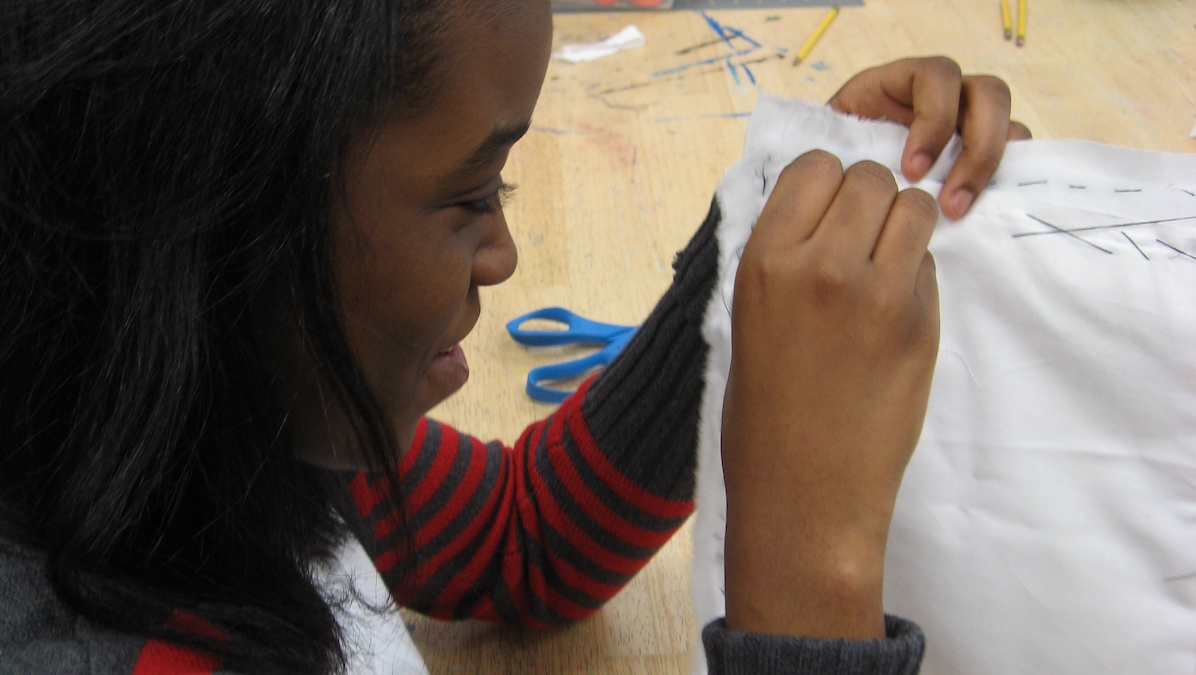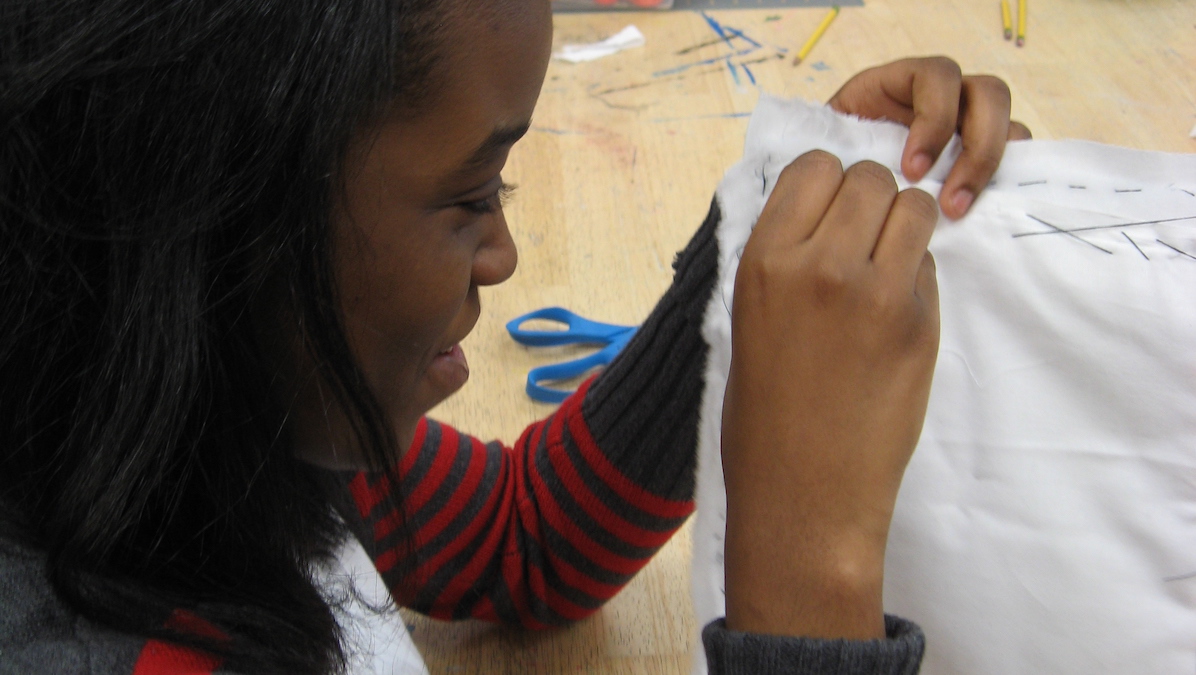
Most people look at art class as “extra.” What I hear is “fun, frivolous, and a waste of time.” Yet, as I observe, well-designed art lessons naturally include other subjects: History and English language arts. But students learn so much more.
Let’s take one rich example: Faith Ringgold.
While studying Ringgold’s life and art, children will learn about the history of racism and sexism during the 20th century in the United States. They’ll also learn about her personal history via her story quilts. Studying how Ringgold composed and designed her quilts, they’ll ask: what colors did she use? How did she place figures within a scene? Why?
Ringgold’s method of mixing media in her quilts – sewing, painting, drawing – and her knowledge of color theory – allow for a range of art skills to be introduced as well.
Parents don’t have to be an expert in any one of these to engage their home-schooled student.
Just be willing to experiment and learn together. Use Ringgold’s work as a guide. Create a series of small sketches and samples: story quilts – or scrap quilts – before embarking on a larger, more finished quilt!
Crucially, throughout the learning process, have your child pause and reflect upon whatever aspect of the lesson you are addressing – and relating it to your family’s lived experiences.
What does this mean?
Say for example, that you are learning about how Ringgold learned to sew (from her mother), you can create a series of prompts to explore your family’s history of needlework. Is there anyone alive that your child may interview about how they learned to sew?
Let’s say they interview grandma.
Did grandma learn at home? In home-ec? Was sewing a part of grandma’s professional life? Did they work as seamstresses or in piece work factories? Did they sew outside of work? For necessity or pleasure?
By grandma sharing her story with her grandchild, grandma’s life expands. It becomes part of a much bigger history than your family’s.
Grandma’s creative process can be related to Ringgold’s. Although one has achieved success in the art world, it doesn’t belittle the achievement of grandma. Both have stories and needlework to share.
Dig deep.
Then, explore that story in broader terms. If grandma worked in a factory, was she part of a union? Did they experience strikes? Discrimination? What were their working conditions like? Students will understand a point in US history in terms of women, labor, and family.
Assembling their research, assimilating it into an illustrated essay is a straightforward approach to teaching children about how to interview others. They are literally writing history.
And, it teaches children how textbook “recorded” history is missing a lot of women’s stories, including their grandma’s.
And, guess what? Their historical essay doubles as an engaging activity covering English composition.
Do you see how easy it is?
Let’s look at the portfolio we have to assess your child’s learning:
Art: The design process (sketches, samples, choices made, revisions), art skills (drawing, painting, sewing, color theory, composition/design), the finished quilt
History: The research /interview process – all data collected (video, image, notes)
History and English: Essays about Ringgold and Grandma’s sewing experiences within their lives and US history.
Centering visual art in curricula organically expands the learning process. Quilting automatically engaged “school” with family, inspiring children to seek new ideas – right at their doorstep!


